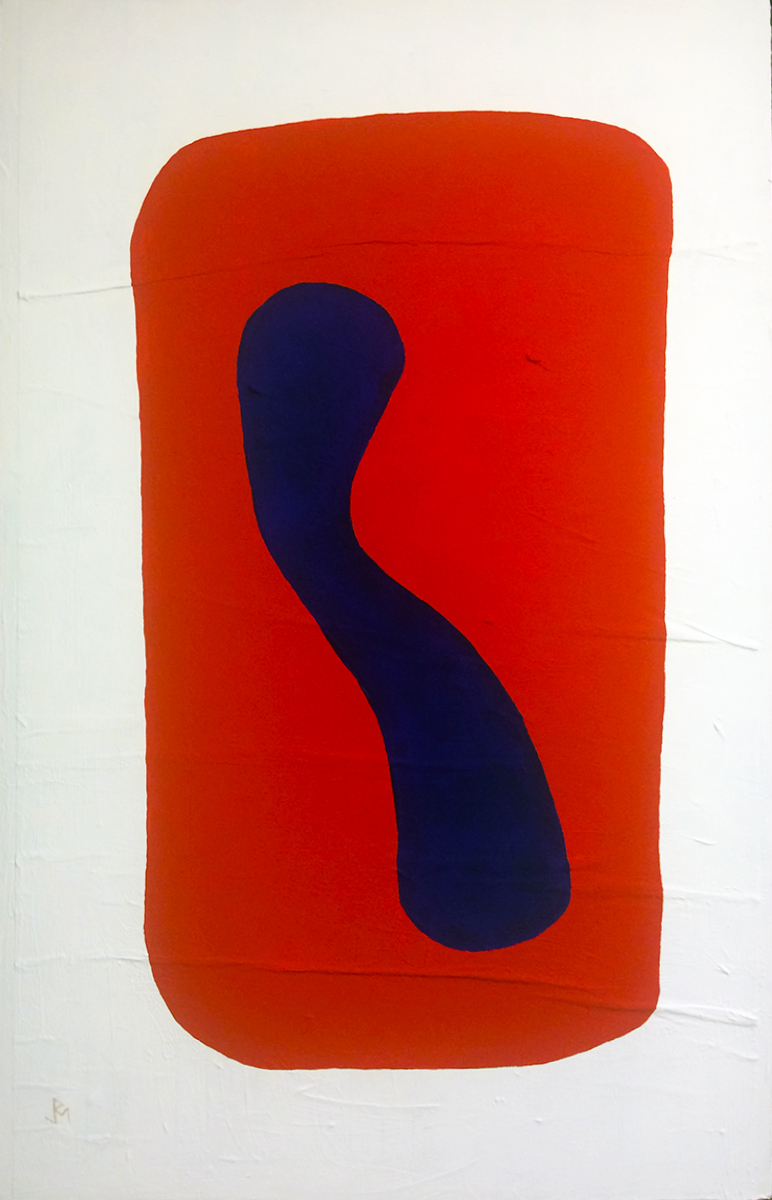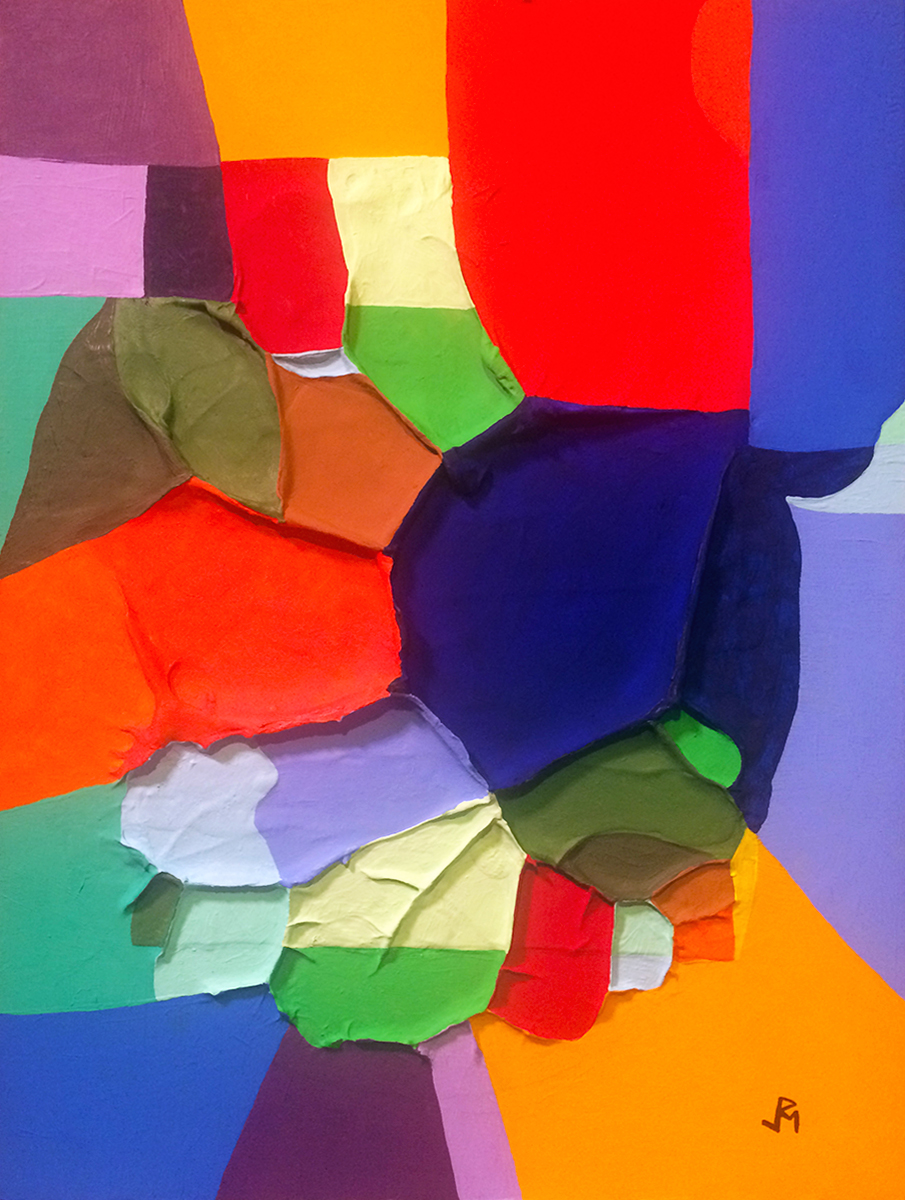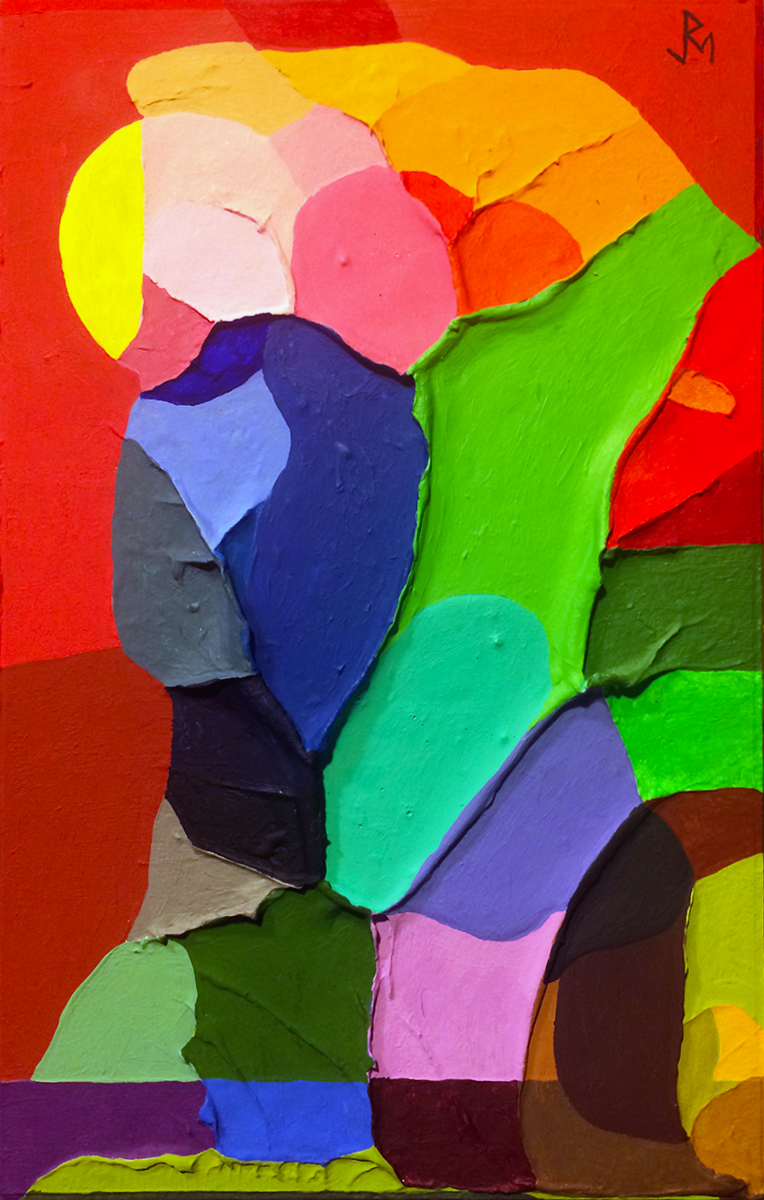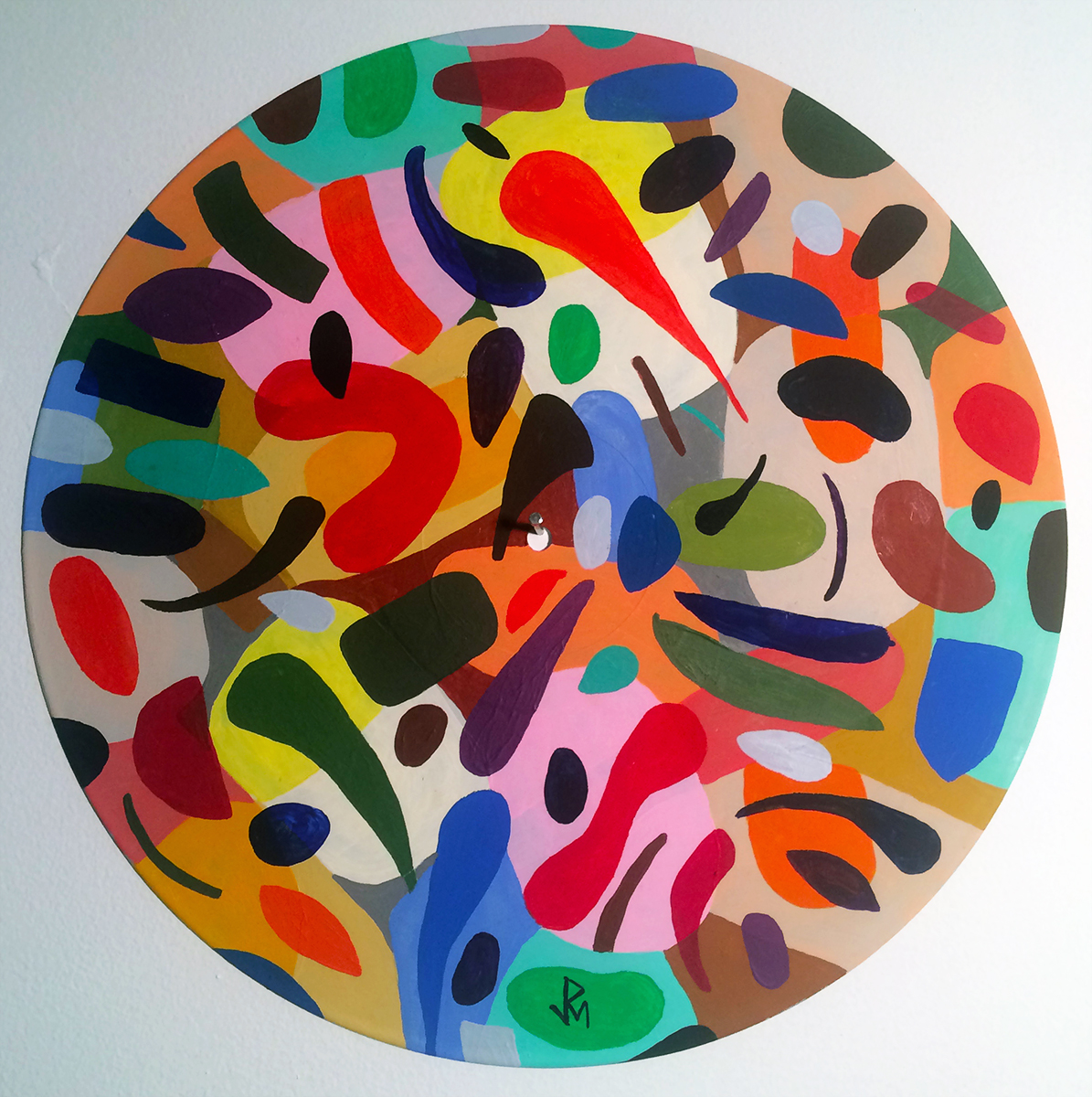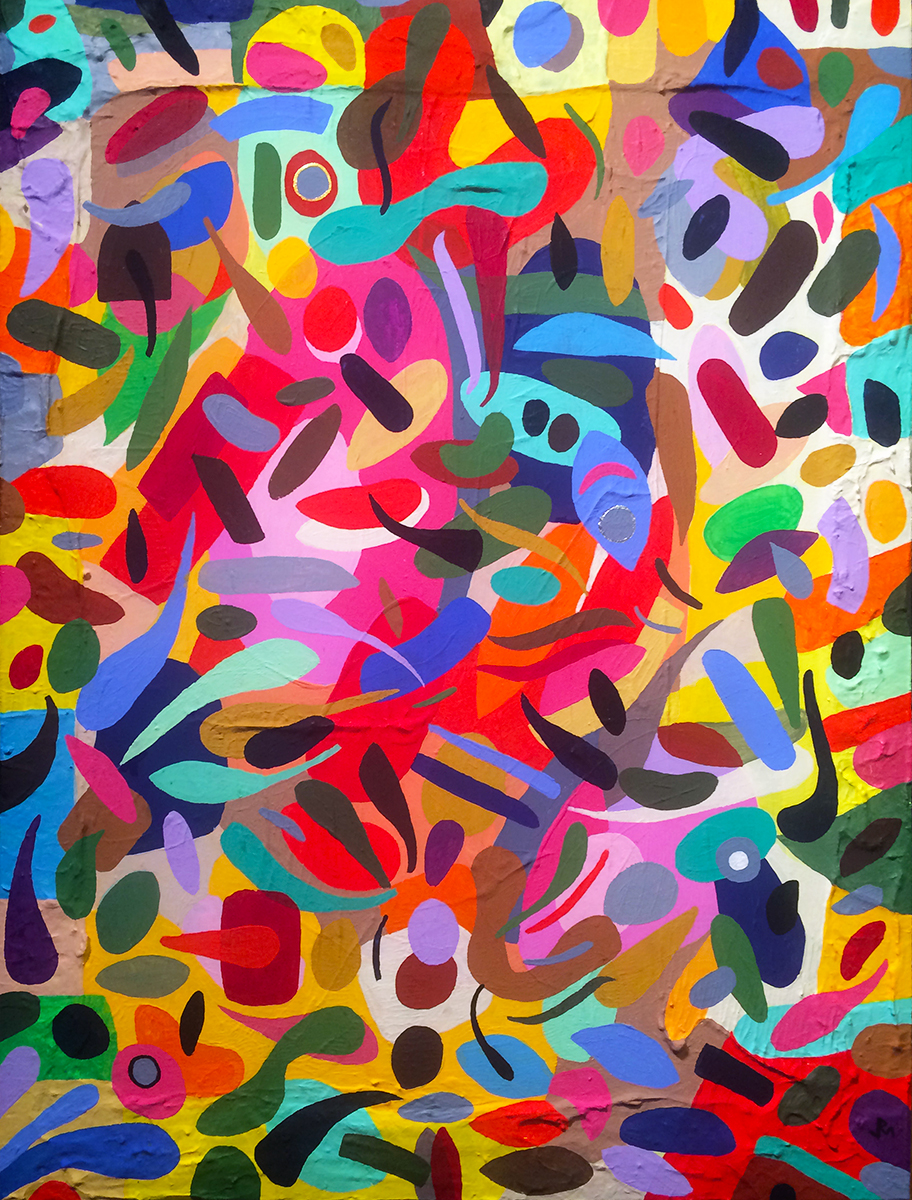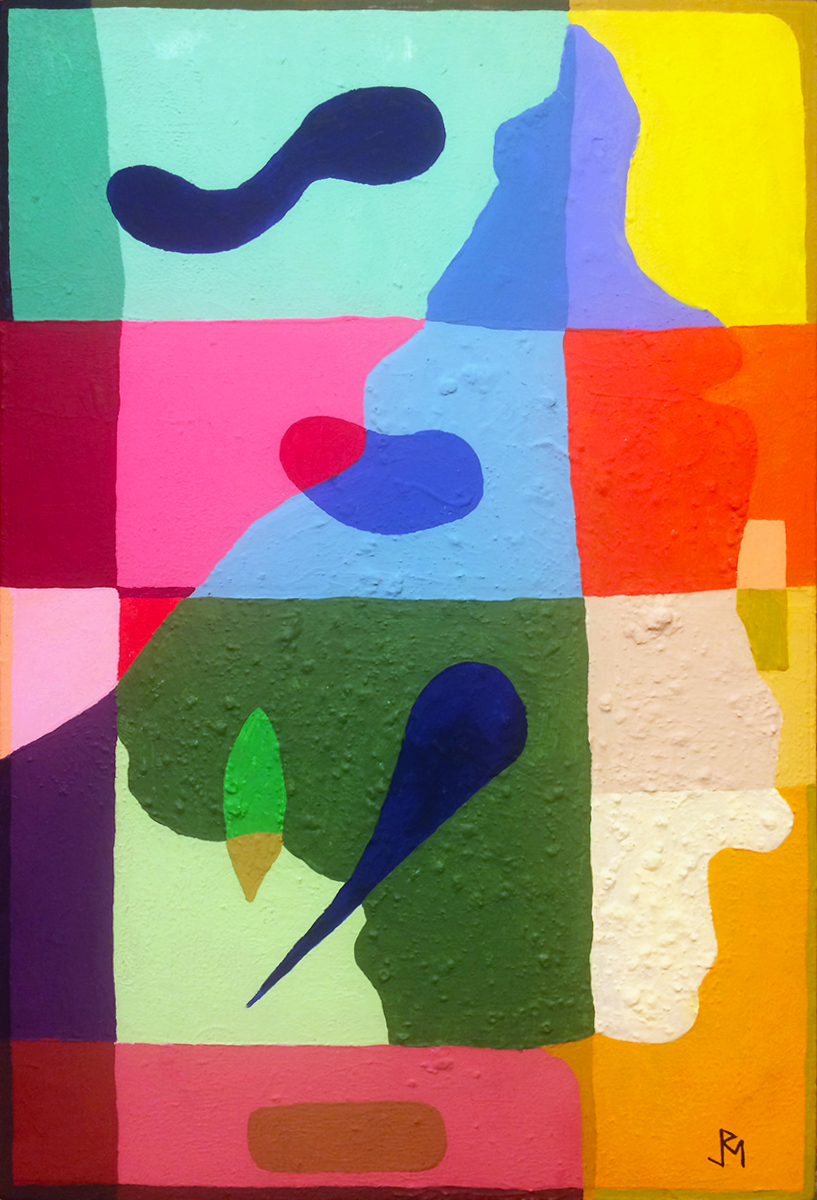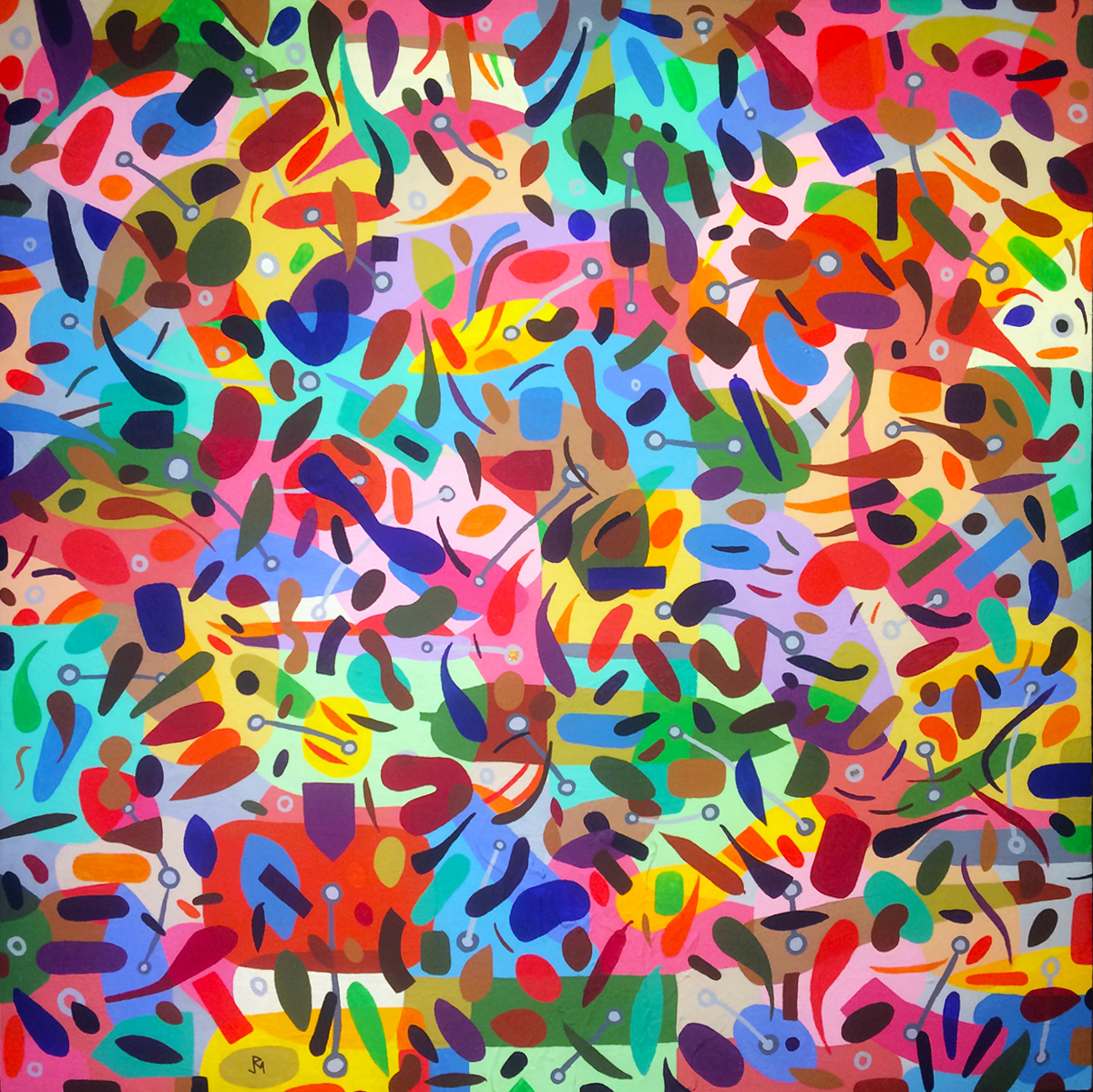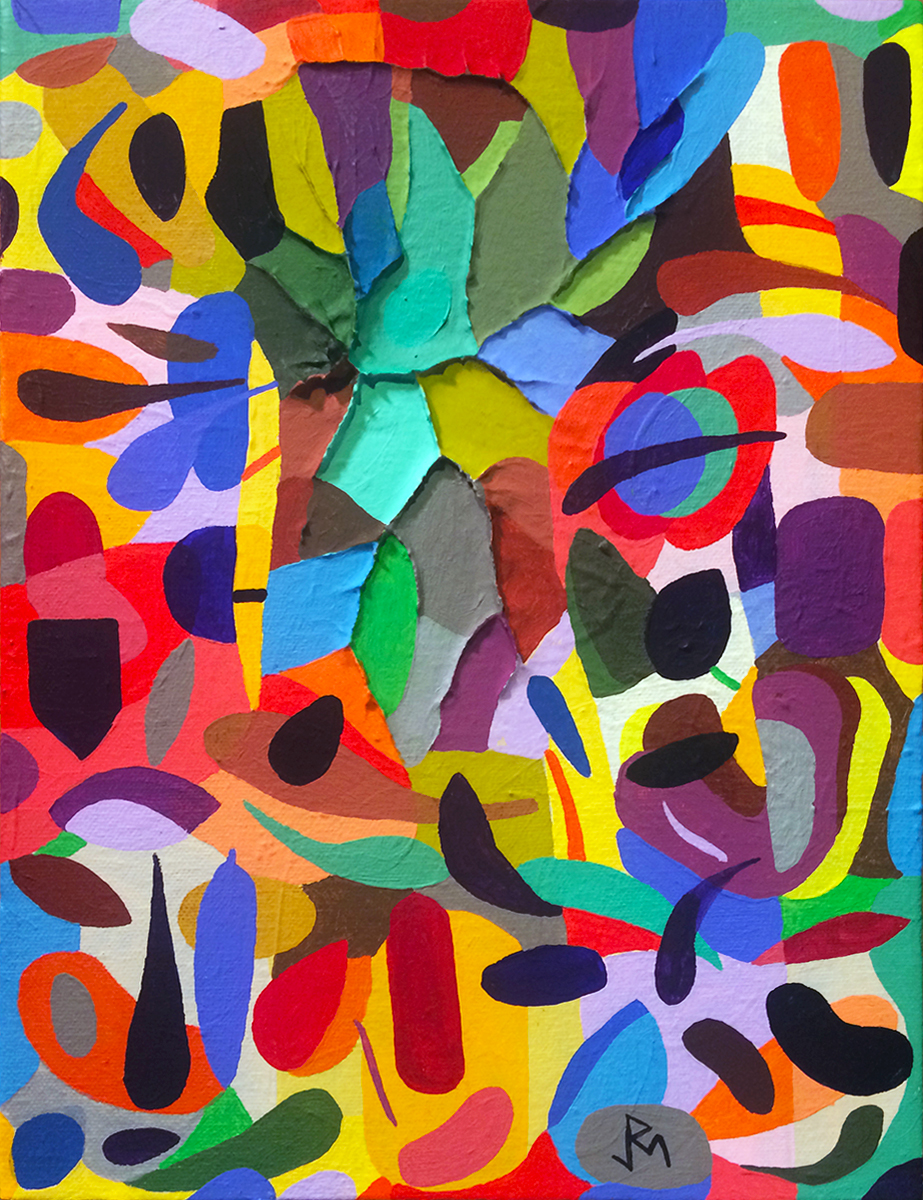The representation of Self in art is an anti-art proposition, outside the traditional auto-portrait format in painting. As 4D+ processes expand the possible methods for conducting anti-art operations and transforming the old formats for the auto-portrait, artists find many novel approaches for integrating material and immaterial facets of the Self into structurally recognizable artistic compositions.
Stability in a composition can be achieved through application technique, composition, adherence to formal constraints and so on. The rectangle and circle provide their own stabilizing influence on the painting's visible plane. Stasis, which is a little different than stability, can be subverted in 4D+ painting through effects. Optics play a significant operational role in determining whether a visual tactic is aesthetically successful. Certainly the use of color will affect the impact or lack of it in any arrangement of elements. Pondering the nature of stasis, its desirability in art, and the means by which it may be disrupted, is worthwhile. Balance is a relative of stasis. The Classicist will be attracted to the provisions of geometry for art. By introducing virtuality, the dimensional painter (and sculptor) will punch through the mathematical membrane that restrains pre-4D art. On another level the nominal is subverted by the polysemic nature of meaning in dimensional thought/language. This phenomenon translates in painting to shapes that encourage multiple "readings," none of which on close scrutiny, can be reduced to singular, exclusively specific meaning. 4D+ painting, in other words, escapes the tyranny of text, and does so in the particular and unity forms, its Self. To say that every painting today is a self-portrait is half-true therefore.
The capacity for dimensional art to activate living space has much to do with components. The elements of the living space can be represented in the formal structure within the painting bounds. Identifying a color set that is compatible with most living spaces is not a problem, really. Developing a palette that projects "ART" into the space without destabilizing it is a different tack. The Dimensional artist will displace the discourse on stability/stasis outside the painting into the living space, which is designed to accommodate change, and growth, which is not the same as change. It is helpful to reflect on the dynamic complexity of stability-stasis-change-growth convergence within a Life-platform. The living room above is a convergent (media) space for a family of four. The implications of art in such a space are profound.
WillyPaul 2 series (NewTag) ~ PJM + Will McLean
A critical undercurrent to this discussion is the coupling of certainty and consistency in the medium of choice embodied in art, and then situated in the context of life. Architecture becomes an extension of this subtext. So does the frame. The tissue or membrane separating content and context for art can both magnify and amplify the content relative to the context. The edge of art is pertinent for this reason. The "reality" of art is a function of its definition, not only in space, but in the material composition of the environment or scenario in which the art is placed. The extension of art into dimensional "space" (e.g., this blog post) provisions additional responses to address the divergent protocols (virtual versus actual). In both environments the rules dictate conventional action. In either environment the medium infers a potential scenario, as a set of options. Choice applies in all cases.
WillyPaul 2 series (Crosses) ~ PJM + Will McLean
Memory and memorial coupled in the image within art is a feature of dimensional, especially digital, art. The capacity for the digital composition to integrate multiple layers of source material expands the scenario within the constraint of the edge. The medium of choice operates differently in virtual, visual space. So does geometry. In these WillyPaul collaborations with my son, the activating element is the shape burned into wood by magnifying glass. The stabilizing element is the landscape. The drawing (from the Edward E. Ayer Digital Collection) instills the static feature in the complex array, which blends complex landscape components with many effects and patterns, starting at the pixel level. The 2-+3D mash-up is disrupted by color-driven push and pull. The photographic and gradient + blur effects infer change as a factor of motion, which works in spite of its illusory nature. Pixels don't actually move in a digital image file. We shouldn't gloss over the collaborative aspect of the pieces. The collaboration itself proposes a history that is at once intimate and immediately visible. In the WillyPaul 2 series, at least thus far, the coupling of stories and history proposes a setting for our efforts, while simultaneously adding flesh to the actual narrative attaching to the image. This is the value of 4D+ for art.


